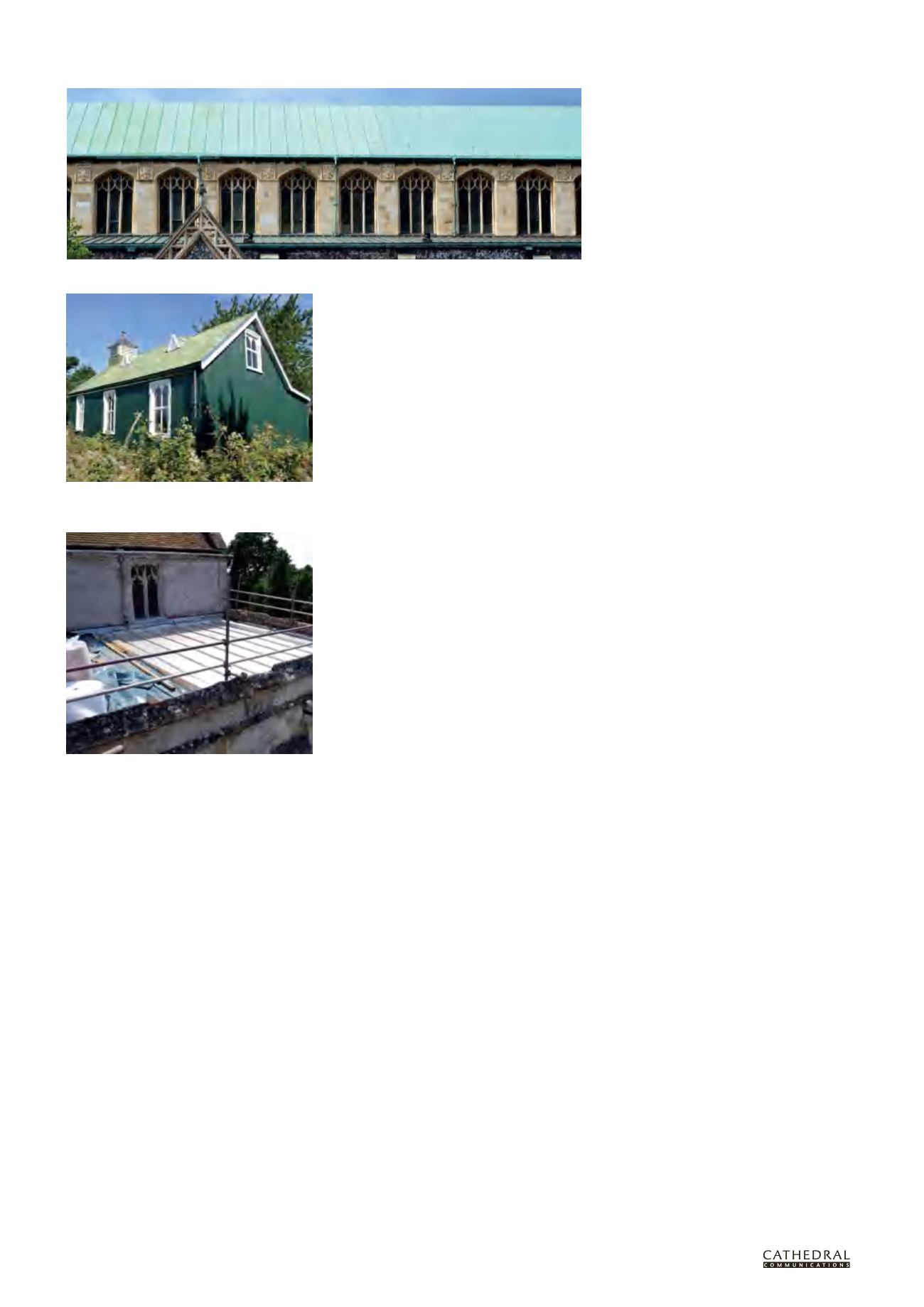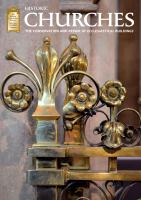

30
BCD SPECIAL REPORT ON
HISTORIC CHURCHES
22
ND ANNUAL EDITION
Depending on the world market
price, copper can be vulnerable to theft,
although the method of fixing tends to
render this less likely than with lead.
Zinc
This mineral was also known to the
Romans and the oxide was used in the
production of brass, but it was not
until the mid-16th century that it was
recognised as a metal in its own right.
The industrialisation of the smelting
process began in Bristol in 1743 but it was
not until further developments in Belgium
and Germany in the middle of the 19th
century that the production of a cheap
zinc roofing material got under way. The
metal itself is comparatively cheap to
produce and to lay but more vulnerable to
corrosion in damp, polluted atmospheres
than copper or lead. In the UK it has been
prone to perforating due to acid rain and,
when laid over oak boarding, tannic acid.
Further developments in 19th-century
France introduced galvanising by smelting
zinc and tin together and coating this
onto steel using an electrolytic process.
More common in mainland Europe
and the Far East, zinc sheet roofing
has recently become fashionable in
the UK and it is available in a limited
variety of coatings and colours
produced by companies such as
Nedzink in Germany and Elzinc in
Spain, although its use in a conservation
context is likely to be limited.
Corrugated iron
Henry Palmer, an architect for the
London Dock Company, patented a
die-rolling process in 1829 to corrugate
metal sheeting, which gave it strength
to support itself over greater lengths,
thus reducing the cost of construction.
Originally Palmer used wrought iron,
but thinner steels were lighter and
more transportable. His patent ran out
in 1843 and the first pre-constructed
buildings using the material were
exhibited at the Great Exhibition in 1851.
The use of corrugated iron for cheap
buildings spread rapidly leading to
what William Morris called in an 1890
pamphlet: ‘a pestilence spreading over
the country’. Enterprising companies
marketed packaged buildings for
community uses, and the ‘tin tabernacle’
was born. Some early survivors have been
listed, but it is now largely restricted to
temporary structures and protection.
Long-term protection depends on
maintaining a good repainting regime.
Iron and steel
Iron roofing was an early substitute for
other materials due to its fire-proofing
qualities but surface corrosion was always
a problem. Cast iron was less prone to
corrosion than ordinary iron, but still
required protection by paint or anodic
protection. One of the most famous
buildings which retains a cast iron roof is
the Palace of Westminster.
Steel performed slightly better due
to the addition of carbon to the molten
iron but zinc coatings and lead paint were
much improved forms of protection,
although each came with a significant
health risk. A big leap forward came in
1913 with Harry Brearley’s discovery that
adding a small proportion of chromium to
steel during smelting greatly improved its
corrosion protection.
Stainless steel, or ‘corrosion-less
steel’ as it was first called, was originally
developed to prevent corrosion in gun
barrels by the addition of small amounts
of chromium and nickel. Its use for
roofing didn’t begin until the 1970s,
when the Less Steel Strip Company
promoted the material as a substitute for
lead roofing. It was relatively light, being
about half the thickness of copper, and
easy to apply, usually with a device which
produced a folded-over standing seam.
Since it does not oxidise or discolour,
stainless steel roofing remains bright,
which is a disadvantage on historic
buildings. It also has a relatively low
puncture-resistance and is difficult to
mend. Repairs on historic structures tend
to involve glue or mastic. As it ‘drums’
when rain falls on it, a deeper isolation
material must also be used than is
necessary for most other forms of roofing
to muffle the sound.
There is a wide range of specifications
of stainless steel on the market
varying according to the proportion
of other metals they contain, which
affect workability and durability. They
are divided into three types by their
crystalline structure: ‘austenitic’, ‘ferric’
and ‘martensitic’. Two basic types are
commonly specified for roofing. The most
commonly specified is Type 304, which
contains 18 per cent chromium and 8 per
cent nickel. Type 316, which is used in
harsher environments, also contains a
small proportion of molybdenum, added
to increase its resistance to corrosion.
Both are ‘austenitic’ types.
MODERN SUBSTITUTES
Bituminous felt
The earliest roofing felts were papers
covered in tar to make them waterproof
and were used to create temporary
waterproof structures. In the 1930s their
use developed and rapidly replaced
horsehair felts after health scares
about anthax. Various base layers were
developed including asbestos fibre, sisal,
fibreglass and hemp, all coated in bitumen
derived from the petrochemical industry.
The great benefits of roofing felts are
that they can be applied to any roof no
matter the pitch, and can take a variety
of surface finishes. They can last up to
Corrugated iron roof and walls of a ‘tin tabernacle’, the
church of All Saints at Brokerswood, Wiltshire (1904)
Stainless steel being laid on the aisles of the parish
church of Tisbury, Wiltshire: the high parapets made
the lower roofs vulnerable to theft, but they also meant
that a change in appearance would not be visible.
Copper on the roof of the friary church of Blackfriars, Norwich
















